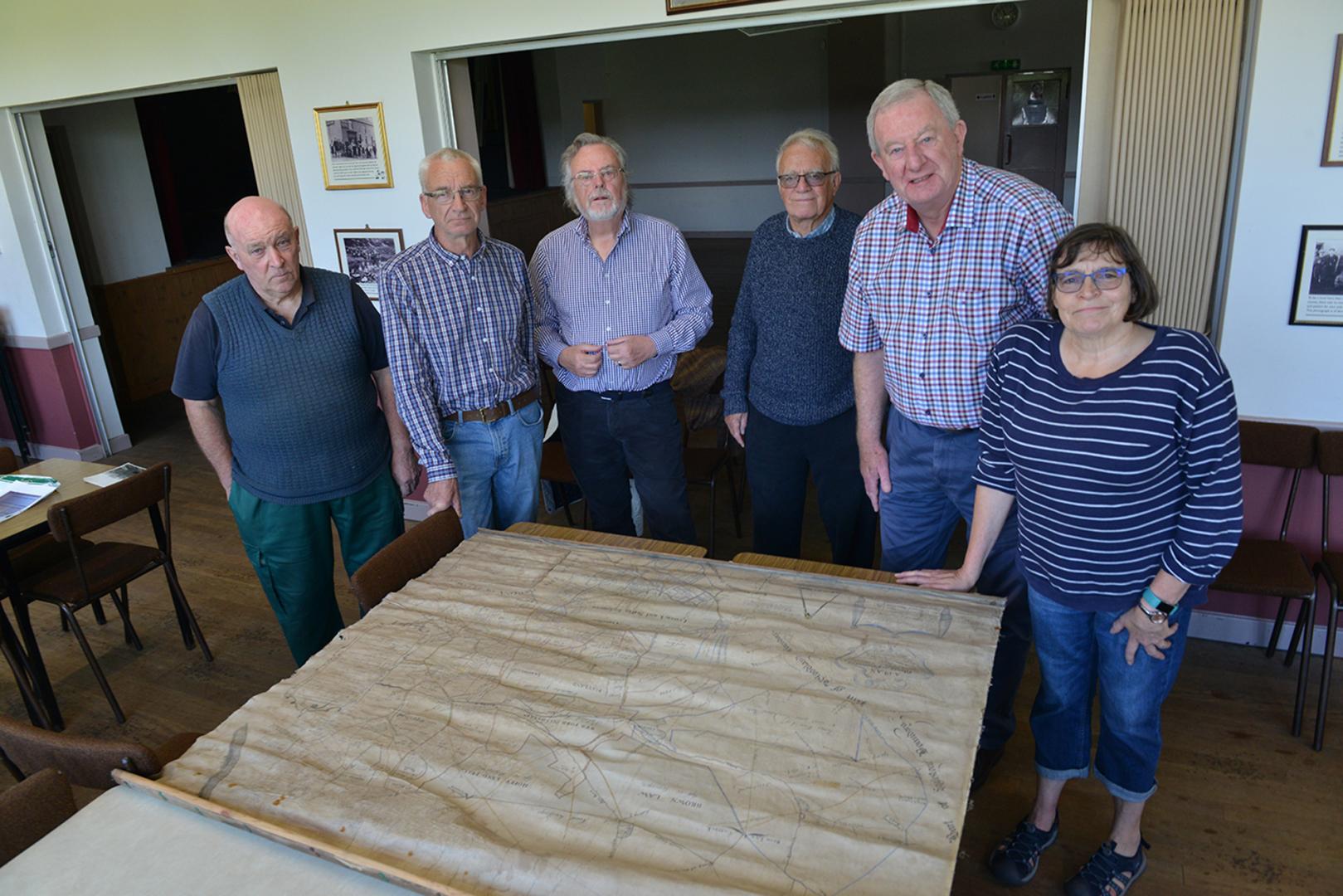A RECENTLY discovered historic map is shedding new light on the upper Gaunless Valley’s past.
The map, which was drawn up in 1757, predates the development of Butterknowle and Copley and shows Lynesack as the predominant settlement in the area.
The map was given on permanent loan to the Gaunless Valley History Trust by Richard Simpson, of Simpsons Fuels, and will be on display during the group’s exhibition later this month.
Trust member Fred Aitken said: “This is probably the biggest find we have had in years.
“We found so many things we didn’t know existed. This is going to be a project all of its own.”
The history group’s chairwoman, Jeanette Newell, pointed out how the spelling of areas on the map was often different to how places are known today.
She said: “Rowntree is one example, it is spelled Rowtree, without the n.”
Fellow group member Chris Mills guessed the map was used to help with the collection of tithes as not only the names of the owners of each piece of land are clearly marked, but also the size of the property.
Measurements on the map are marked in chains, with a chain being exactly the length of a cricket pitch.
Three other maps were handed over to the history trust along with the 1759 map, but the others date back to about 1890. However, these maps are so fragile they will not form part of the exhibition and the group hopes to have them restored.
The exhibition, which takes place at Butterknowle Village Hall, on Saturday, August 31, and Sunday, September 1, is centred on the schools and transport in the area.
Particular focus is given to the history of five schools in the area – Haggerleases, Butterknowle, Quarry Lane, Lynesack and Woodland.
Part of the exhibition features photographs from the schools, text books and registers. Among them is an certificate which commended a pupil for seven years attendance without missing a day.
One particularly interesting photograph shows about 80 children in a single class at Woodland School.
Mrs Newell said: “Lynesack had only two classes but it had 300 pupils. The quarry Lane school was established in 1839 and continued until 1914 when the governors gifted it to the parish council.
“They intended to use it as a parish hall, but I imagine the war got in the way. It has had various uses but now it is the offices of a tree consultant.
As part of the transport exhibition there are plans for display cases featuring models of the various buses that served the area as well as an old Liptons van that still delivers tea to this day.
The exhibition will run from 11am to 4pm with a slide show presentation at 2pm on both days. Admission is free but donations are welcome.
Anyone who has any items or photographs the group might be interested in can contact Mrs Newell on email [email protected].




